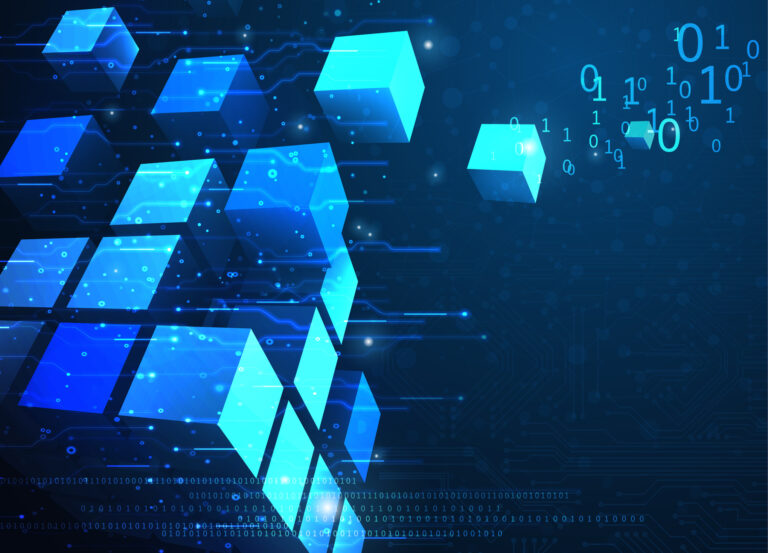There’s something missing today between IT and the Enterprise Sales team.
For decades, enterprise revenue teams have stressed the importance of alignment between Sales and Marketing to achieve sustainable growth. And, while that alignment is critical, there’s another close collaboration that also impacts the success of the revenue team.
It’s found in a rather unlikely place — the Information Technology (IT) group.
For an enterprise revenue team to reach its peak potential, it is reliant on a collaborative partnership with IT. As functions, Sales, Marketing and Customer Success are technology-dependent, having moved long ago from subsisting on the “eight-legged” calls.
Today, with technology playing such a role in revenue team success, it’s time for organizations to align with IT. They are also essential members of the revenue team.
“Information technology and business are becoming inextricably interwoven. I don’t think anybody can talk meaningfully about one without the talking about the other.”
Bill Gates Cofounder, Microsoft
IT’s Role on the Revenue Team
The revenue team experiences direct day-to-day customer contact through Sales, Marketing, Customer Success and other functions. Therefore, it is the revenue team’s role to discover new markets, lead customer engagement, generate revenue and ensure customer satisfaction. Within this process, IT acts as an enabler, facilitating enabling technologies and providing efficiencies in delivering operations.
In its enablement role, IT governs the technology that empowers Sales, Marketing and Customer Service. From the CRM to email and beyond, IT establishes new ceilings for both productivity and performance. This partnering role encompasses both strategic and operational components.
Often, like with respect to organizational-wide tools like email, IT often serves a more strategic role. They might be responsible for procurement, installation and administration. However, for the revenue tech stack, strategies are most often driven by the functional departments of the revenue team.
Still, a close working partnership with IT is advised.

IT’s Most Important Task is Data Security
Among all of IT’s accountabilities, the highest priority lies with data security. Security breaches bring a business’s operations to a screeching halt. Not only are customers put off, but damage to the brand affects the acquisition of new customers.
Additionally, large data breaches often result in financial losses in the hundreds of millions of dollars. Tragically, some have surpassed over a billion dollars on several highly-publicized occasions.
With IT focused on data security, the revenue team should hesitate to request any software solutions that allow data to be removed off one platform, handled, and moved to another platform. IT will consistently advocate the seamless integration of one solution to another, ensuring data is as safe and secure as possible.
Data security is so important to an enterprise that technology solutions are almost always governed by IT. The IT group ordinarily does not hold the budget or make the ultimate purchase decision. However, the IT group will certainly conduct security audits prior to purchase and deployment. The IT group definitely has influence in technology procurement.

In order to establish a trusting relationship between the revenue team and IT, it’s important to gain IT’s input with creating solution requirement specifications prior to short-listing alternative solutions. The earlier the collaboration between the teams, the better.
Despite IT’s Operational Excellence, IT Should Not Serve as Revenue Tech Stack Administrators
In most enterprise organizations, the IT groups excel operationally. When technology doesn’t work as it’s expected, the IT group is called to fix, repair and/or replace. Additionally, the IT group maintains and administers enterprise-wide technology too, like email systems, for instance.
However, when it comes to the revenue tech stack, it is usually best to leave day-to-day administration to the Operations team(s), be it Sales Ops, Marketing Ops, and/or Revenue Ops. It’s not that IT can’t handle the administration. It’s rather that the revenue team probably can’t afford to wait.
For example, enterprise Sales organizations change routinely. If not during the quarter, then they change at the quarter. Sales territories change, and sales reps change as well. Some reps move on, and new reps are onboarded. With global markets and multiple product lines, complexity grows exponentially.
When changes occur with Sales groups, the revenue team simply can’t wait for IT to respond to service tickets and make corresponding changes within solutions. When speed to lead, for instance, is measured in minutes and sometimes seconds, the Sales team simply can’t wait hours or days for leanly staffed IT teams to make necessary changes to systems, no matter how mission critical.
Fostering Collaboration Between the Revenue Team & Information Technology
With so much at stake for a successful, collaborative partnership between the revenue team and the IT department, there needs to be a lasting commitment from both groups. Actions taken across both departments to foster a collaborative relationship include:
- Sales and Marketing leaders should learn how agile IT teams work. Understanding work processes and terminology like “sprints” go a long way to bridging communication gaps.
- Likewise, IT leaders should keep their teams informed of developments in the Sales, Marketing and Customer Success teams. Not only should IT understand what technologies are being used, but also the processes in which work is performed. this includes key performance indicators (KPIs). Keen understanding enhances teamwork, cooperation and follow through.
- Begin the collaboration by jointly examining Sales and Marketing use cases and their challenges. From there, architect solutions around the buyer and seller experiences. Collaboratively define required technology capabilities.
- Look to build a tech stack foundation based on integrated, connected and collaborative tools that enrich the buyer journey through the development of better internal revenue orchestration and buyer engagement.
- Go beyond procurement and focus on deployment and adoption. “Shelfware” does not increase efficiency or solve for established problems. It’s impossible to achieve a return on investment if new revenue tech stack solutions are not utilized to their fullest.
- Prioritize collaboration to make it work. In a crowded calendar, it’s too easy to put off yet more meetings with more stakeholders. Know that greater collaboration between IT and the revenue team is simple common sense, and a prerequisite to achieving growth goals.
“Our intuition about the future is linear. But the reality of information technology is exponential, and that makes a profound difference. If I take 30 steps linearly, I get to 30. If I take 30 steps exponentially, I get to a billion.”
Ray Kurzweil Inventor & Futurist
A New Era of Growth Requires New Levels of Collaboration
Growth in today’s ultra competitive, global markets requires a holistic approach that factors talent, training, coaching and development, strategy, tactics, and, of course, technology and other enabling tools.
Within that context, and considering the digital/information age in which we live, work and compete, Information Technology departments are critical enablers. An enterprise revenue team can no longer look at IT as a mere support function in a provider/client relationship. Rather, success in growth requires a partnership of equals, where IT provides the expertise and guidance as a pillar on which to build the foundation of success.










